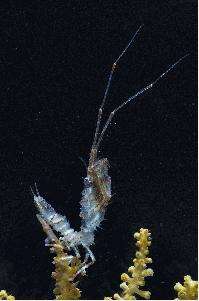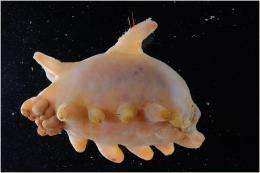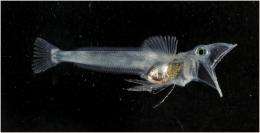New pictures reveal rich Antarctic marine life in area of rapid climate change

(PhysOrg.com) -- New photographs of ice fish, octopus, sea pigs, giant sea spiders, rare rays and beautiful basket stars that live in Antarctica’s continental shelf seas are revealed this week by the British Antarctic Survey (BAS).
As part of an international study on sea surface to seabed biodiversity a research team from across Europe, USA, Australia and South Africa onboard the BAS Royal Research Ship James Clark Ross sampled a bizarre collection of marine creatures from the Bellingshausen Sea, West Antarctica - one of the fastest warming seas in the world. Research cruise leader Dr. David Barnes of British Antarctic Survey said,
“Few people realise just how rich in biodiversity the Southern Ocean is - even a single trawl can reveal a fascinating array of weird and wonderful creatures as would be seen on a coral reef. These animals are potentially very good indicators of environmental change as many occur in the shallows, which are changing fast, but also in deeper water which will warm much less quickly. We can now begin to get a better understanding of how the ecosystem will adapt to change. Our research on species living in the waters surrounding the BAS Rothera Research Station on the Antarctic Peninsula shows that some species are incredibly sensitive to temperature changes. Our new studies on the diverse range of marine creatures living in the deep waters of the Bellingshausen Sea will help us build a more complete picture of Antarctica’s marine biodiversity and give us an important baseline against which we can compare future impact on marine life.”
-

Sea Pig (sea cucumber or Holothuroid). - This was one of the most common and abundant animals in our catches. Sea cucumbers are important in processing the sediment (like earthworms on land) but their numbers worldwide have been threatened by recent fisheries. -

Young Icefish, Chaenocephalus aceratus - These fish are highly adapted to life in cold water with anti-freeze, but no red blood cells, in their blood.
BAS biologist Dr. Sophie Fielding studies krill — a small crustacean that is the main food for penguins, seals and whales. During the research cruise she found remarkable variations in species living within a relatively small area. She said, “Changes at the Earth’s surface directly affect the surrounding ocean and the marine animals living there. For example accelerating glacier melt, collapse of ice shelves and shrinking winter sea-ice all seem to be impacting sea life. We want to understand that impact and what the implications for the food chain may be.”
Dr. Stefanie Kaiser is a German specialist on small seabed animals. She said, “Although many of these animals are tiny, their behaviour helps us paint a much bigger picture in terms of how marine life may react to changes to the environment.”
Provided by British Antarctic Survey

















